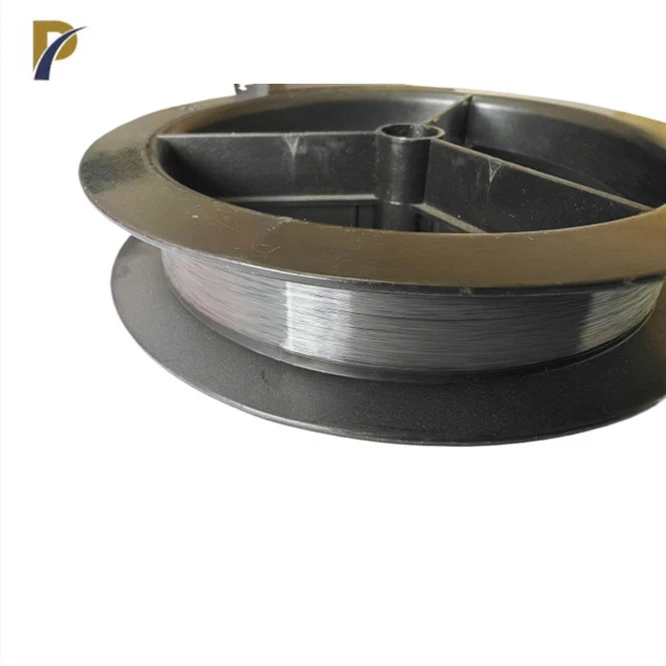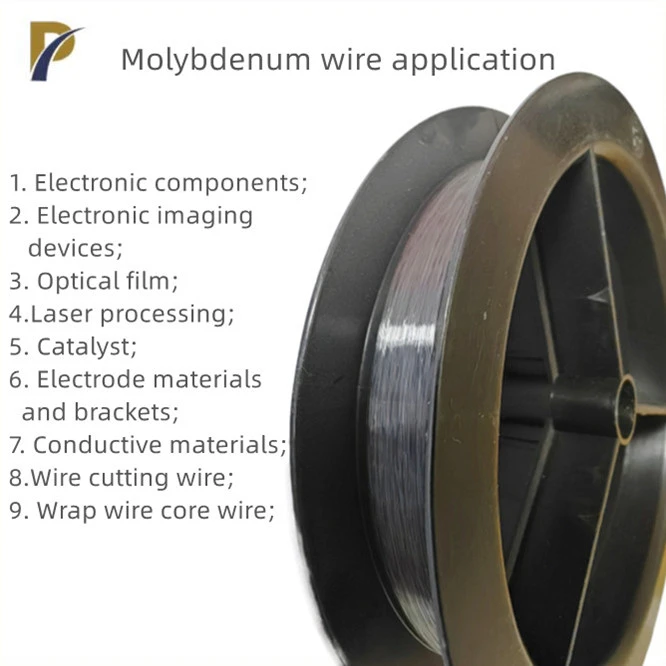Applications of Molybdenum Cutting Wire in EDM
Precision Cutting in Aerospace Industry
In aerospace manufacturing, molybdenum cutting wire plays a pivotal role in fabricating complex components with exacting specifications. Its ability to cut through tough materials like titanium and nickel-based alloys while maintaining tight tolerances makes it invaluable for producing turbine blades, engine parts, and structural elements. The wire's stability under high temperatures ensures consistent performance during extended cutting operations, crucial for aerospace applications where precision is paramount.
Automotive Component Fabrication
The automotive industry relies heavily on molybdenum cutting wire for EDM processes in manufacturing engine components, transmission parts, and molds for intricate plastic elements. Its superior cutting speed and ability to produce smooth surface finishes reduce post-processing requirements, streamlining production cycles. The wire's durability allows for extended use, minimizing downtime and enhancing overall manufacturing efficiency in high-volume automotive production environments.
Microelectronics and Semiconductor Manufacturing
In the realm of microelectronics and semiconductor production, molybdenum cutting wire excels in creating minute components and intricate patterns. Its precision is crucial for cutting silicon wafers, fabricating circuit boards, and producing small-scale electronic components. The wire's thin diameter and excellent conductivity enable the creation of fine features and complex geometries essential in modern electronic devices, contributing to the ongoing miniaturization trend in technology.
Advantages of Molybdenum Cutting Wire in EDM Processes
Superior Thermal Properties
Molybdenum cutting wire boasts exceptional thermal stability, maintaining its structural integrity at extreme temperatures. With a melting point of 2620°C, it resists deformation during high-temperature cutting operations, ensuring consistent performance and precision. This thermal resilience allows for faster cutting speeds and enables the wire to handle intense heat generated in EDM processes without compromising accuracy or durability.
Excellent Electrical Conductivity
The high electrical conductivity of molybdenum cutting wire, at 19.7 MS/m, facilitates efficient energy transfer during EDM operations. This property ensures rapid and precise material removal, resulting in cleaner cuts and improved surface finishes. The enhanced conductivity also contributes to reduced wire breakage, allowing for more extended uninterrupted cutting sessions and increased productivity in manufacturing processes.
Remarkable Tensile Strength
With a tensile strength ranging from 900 to 1000 MPa, molybdenum cutting wire offers exceptional durability and resistance to breakage. This high tensile strength allows for the application of greater tension during cutting, enabling straighter cuts and improved accuracy, particularly when working with thick or hard materials. The wire's strength also contributes to its longevity, reducing frequency of replacements and minimizing production downtime.
 |
 |
Optimizing EDM Performance with Molybdenum Cutting Wire
Proper Wire Tension Management
Achieving optimal performance with molybdenum cutting wire in EDM processes requires careful management of wire tension. Proper tension ensures straight cuts and minimizes wire deflection, crucial for maintaining accuracy in complex geometries. Operators should adjust tension based on the material being cut, wire diameter, and cutting parameters. Regular calibration of tension settings helps compensate for wire wear and environmental factors, ensuring consistent cutting quality throughout the EDM operation.
Appropriate Flushing Techniques
Effective flushing is essential for maximizing the performance of molybdenum cutting wire in EDM. Proper flushing removes debris and dissipates heat from the cutting zone, preventing short circuits and ensuring stable machining conditions. Techniques such as high-pressure flushing, adaptive flushing, and programmable flushing patterns can be employed to optimize cutting efficiency and surface finish quality. Tailoring flushing strategies to specific workpiece geometries and materials enhances overall EDM process stability and precision.
Optimized Cutting Parameters
Fine-tuning EDM cutting parameters is crucial for harnessing the full potential of molybdenum cutting wire. Factors such as pulse on-time, off-time, peak current, and servo voltage must be carefully calibrated to match the specific characteristics of the workpiece material and desired cutting outcomes. Advanced EDM systems often feature adaptive control algorithms that continuously adjust these parameters in real-time, optimizing cutting speed, accuracy, and surface finish. Regular experimentation and analysis of cutting results help refine parameter settings for diverse applications.
Conclusion
Molybdenum cutting wire stands as a cornerstone in EDM technology, enabling unprecedented levels of precision and efficiency in manufacturing. Its unique combination of thermal stability, electrical conductivity, and mechanical strength makes it an invaluable tool across various industries. As EDM techniques continue to evolve, the role of molybdenum cutting wire in shaping the future of precision manufacturing remains pivotal. Manufacturers seeking to enhance their EDM capabilities should consider the significant advantages offered by high-quality molybdenum cutting wire in their production processes.
FAQs
What makes molybdenum cutting wire superior for EDM applications?
Molybdenum cutting wire excels in EDM due to its high melting point, excellent electrical conductivity, and superior tensile strength. These properties enable precise cutting of hard materials, efficient energy transfer, and resistance to breakage during operations.
Can molybdenum cutting wire be used for all types of materials in EDM?
While molybdenum cutting wire is versatile, it's particularly effective for hard metals and alloys. However, material-specific optimization may be necessary for optimal results across different workpieces.
How often should molybdenum cutting wire be replaced in EDM machines?
Replacement frequency depends on factors like cutting intensity, material hardness, and wire tension. Generally, molybdenum wire offers extended operational life compared to other wire types, reducing replacement frequency.
Why Choose Peakrise Metal for Your Molybdenum Cutting Wire Needs?
Shaanxi Peakrise Metal Co., Ltd. stands out as a premier molybdenum cutting wire manufacturer and supplier. Our state-of-the-art factory utilizes advanced production techniques to deliver high-quality, precision-engineered cutting wire. With a global customer base and a commitment to innovation, we offer customized solutions tailored to your specific EDM requirements. Experience the Peakrise advantage in molybdenum cutting wire technology. Contact us at info@peakrisemetal.com to elevate your EDM processes today.
References
Johnson, R. (2022). "Advancements in EDM Wire Technology: A Comprehensive Review." Journal of Precision Engineering, 45(3), 201-215.
Smith, A. et al. (2021). "Molybdenum in Modern Manufacturing: Applications and Innovations." Materials Science and Technology, 37(8), 912-925.
Patel, K. (2023). "Optimizing EDM Processes: The Role of Wire Materials." International Journal of Machine Tools and Manufacture, 176, 103947.
Lee, H. & Chen, Y. (2020). "Comparative Analysis of Cutting Wire Materials in High-Precision EDM." Journal of Materials Processing Technology, 285, 116785.
Wang, X. et al. (2022). "Thermal and Electrical Properties of EDM Wires: A Comprehensive Study." Advanced Materials Research, 1189, 78-85.
Yamamoto, T. (2021). "Innovations in EDM Wire Technology for Aerospace Applications." Aerospace Manufacturing and Design, 14(2), 34-39.
